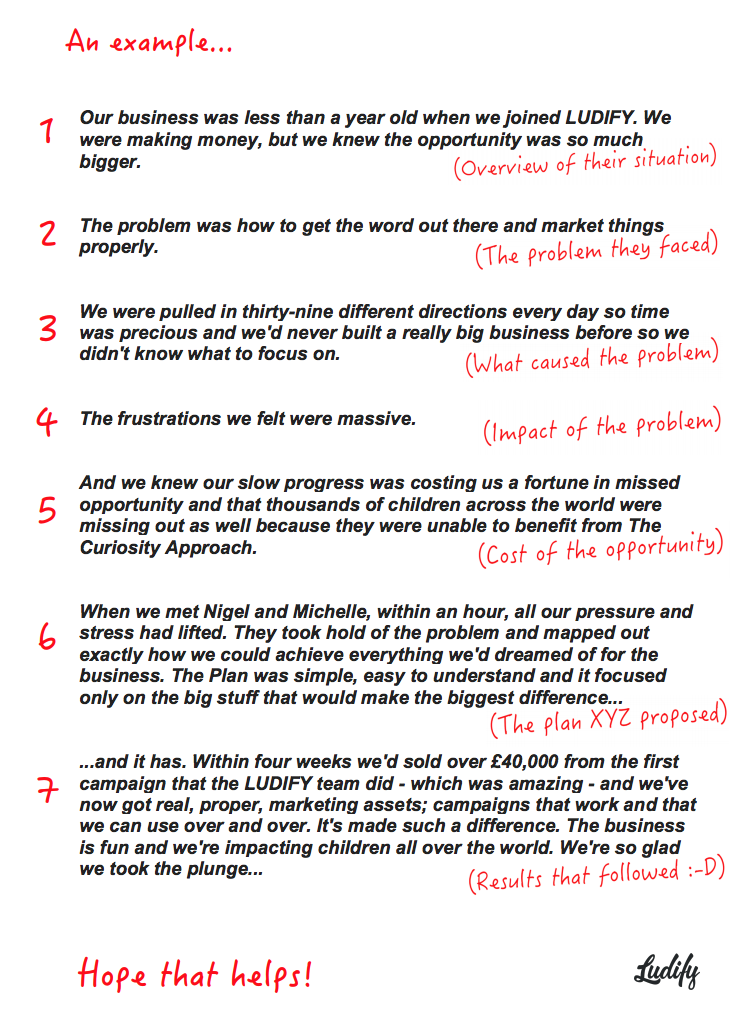by Nigel Botterill
It’s true that what others say about you is at least a hundred times more important, and more powerful, than what you say about yourself.
In the good old days that used to manifest itself as testimonials but now, in 2018, it’s what’s said on the myriad of review sites that really packs a punch and smart marketers are pulling feeds from reputable review sites like Google, TripAdvisor, thebestof, etc. onto their websites because it adds real authenticity to the quotes and comments.
Really smart stuff to do. But there is still a place for case studies in your marketing copy and on your website.
What’s the difference between a case study and a testimonial?
Good question. The answer is all about structure. And length.
A case study doesn’t have to run to hundreds of words – in fact, it’s generally much better if it’s short and punchy, but it needs the right structure to best help your marketing efforts.
Which is why I’m setting out for you here the ideal structure you should use when you’re compiling or writing case studies for use on your website or in any of your marketing collateral.
Please use it – because a properly structured case study is worth way more than a testimonial and, in truth, can be more useful to you than ten times that number of reviews on your site, as you’ll see.
It’s written in your customer’s voice, i.e. it’s them saying it, but you can write it for them and get them to sign o and agree it – which is what all smart marketers do. After all, it’s not your customer’s job to understand the nuances of your marketing and which elements of your USP you want to bring out or support. That’s your job.
So write it for them. Make sure it’s truthful and reflects what has happened, and then send it to them asking them to agree the wording or make any changes if they want.
Seven parts to a well-written case study

When you write your real customers stories using this structure, you end up with compelling marketing copy that really enhances your message and supports exactly what you want your potential customers to know.
So, by way of example, here’s what that can look like in practice (obviously the numbers wouldn’t be there in real life- I’ve just added them to help you relate to the structure of both).
Boom!
You can see the difference a case study makes when it’s told with that structure. Copy this page. Or cut it out. Stick it on your wall- and use it when you’re writing about what you’ve done for your customers. So many businesses just assume that their potential customers know all about what that they do and how good they are. But they don’t. It’s your job to tell ‘em. And well structured case studies can really help…


